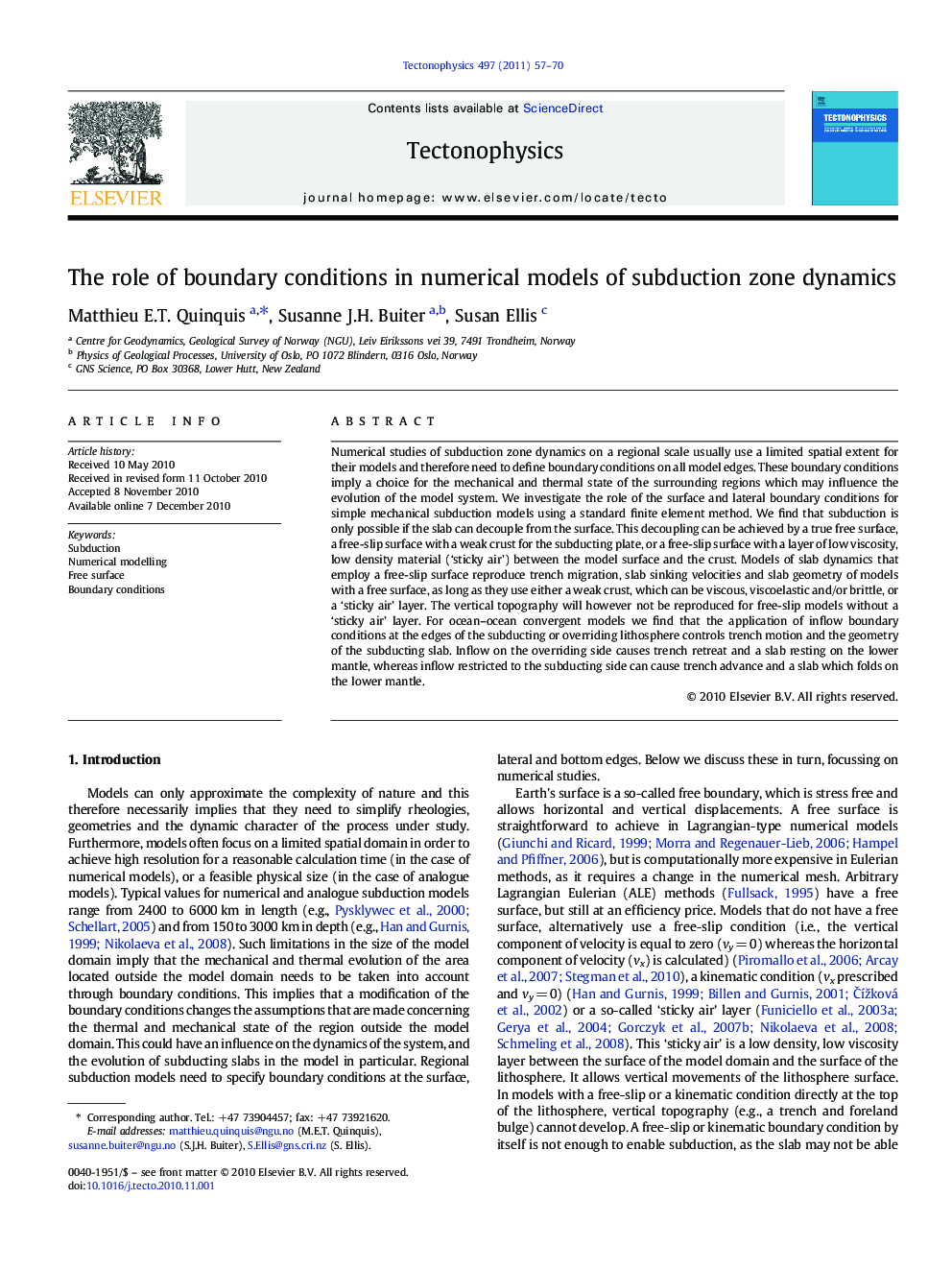| Article ID | Journal | Published Year | Pages | File Type |
|---|---|---|---|---|
| 4693337 | Tectonophysics | 2011 | 14 Pages |
Numerical studies of subduction zone dynamics on a regional scale usually use a limited spatial extent for their models and therefore need to define boundary conditions on all model edges. These boundary conditions imply a choice for the mechanical and thermal state of the surrounding regions which may influence the evolution of the model system. We investigate the role of the surface and lateral boundary conditions for simple mechanical subduction models using a standard finite element method. We find that subduction is only possible if the slab can decouple from the surface. This decoupling can be achieved by a true free surface, a free-slip surface with a weak crust for the subducting plate, or a free-slip surface with a layer of low viscosity, low density material (‘sticky air’) between the model surface and the crust. Models of slab dynamics that employ a free-slip surface reproduce trench migration, slab sinking velocities and slab geometry of models with a free surface, as long as they use either a weak crust, which can be viscous, viscoelastic and/or brittle, or a ‘sticky air’ layer. The vertical topography will however not be reproduced for free-slip models without a ‘sticky air’ layer. For ocean–ocean convergent models we find that the application of inflow boundary conditions at the edges of the subducting or overriding lithosphere controls trench motion and the geometry of the subducting slab. Inflow on the overriding side causes trench retreat and a slab resting on the lower mantle, whereas inflow restricted to the subducting side can cause trench advance and a slab which folds on the lower mantle.
Research Highlights► Subduction requires that the downgoing slab decouples from the surface. ► Free-slip surface boundaries only allow subduction if a surface weak layer is used. ► Artificial ‘air’ reproduces to first order a subduction model with a free surface.
